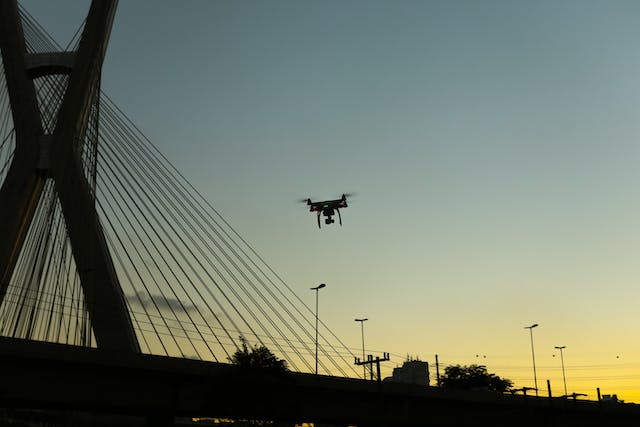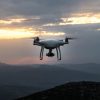Drone technology is rapidly evolving, with advancements in sensor capabilities, data processing, and automation further enhancing their utility in infrastructure inspection. As drones become more sophisticated and affordable, their adoption is expected to accelerate, transforming the way we inspect and maintain our critical infrastructure assets.
The vastness and complexity of infrastructure networks pose significant challenges for inspecting their condition and identifying potential problems. Traditional inspection methods, such as climbing towers or bridges, can be time-consuming, dangerous, and inefficient. This is where drone technology emerges as a transformative force, offering a safe, efficient, and cost-effective approach to inspecting infrastructure.
Advantages of Drone-Based Inspections
Drone-based inspections have emerged as a transformative technology for assessing the condition and safety of bridges, towers, and other critical structures. These inspections offer a host of advantages over traditional methods, including:
Enhanced safety: Drones eliminate the need for human inspectors to climb towers, bridges, and other structures, significantly reducing the risk of falls and other accidents. This is particularly crucial for inspecting high-rise structures or those with complex geometries.
Improved efficiency: Drones can collect detailed data about the structure’s condition much faster than human inspectors, who can be limited by physical access and safety concerns. This allows for more frequent inspections, enabling proactive maintenance and preventing potential failures.
Accurate data collection: Drones can capture high-resolution images, videos, and thermal data, providing inspectors with a comprehensive view of the structure’s condition. This data can be analyzed to identify defects, deterioration, and potential hazards.
Accessibility to hard-to-reach areas: Drones can access areas that are difficult or dangerous for human inspectors to reach, such as narrow ledges, tight spaces, or structures in hazardous environments. This allows for thorough inspections of even the most challenging structures.
Real-time data acquisition: Drones can transmit data in real-time, enabling inspectors to monitor the inspection process and make informed decisions on the spot. This can be particularly useful for detecting developing issues that require immediate attention.
Cost-effectiveness: Drone-based inspections can be more cost-effective than traditional methods, which often involve scaffolding, ladders, and other expensive equipment. Additionally, drones can reduce the need for multiple inspections, further lowering overall costs.
Reduced environmental impact: Drone inspections eliminate the need for constructing temporary access structures, which can damage vegetation and disturb wildlife. This contributes to a more sustainable and environmentally friendly approach to infrastructure inspection.
Traffic Disruption: In the case of bridge inspections, drone usage may allow traffic to continue as usual without the need for lane closures or stops
Pre-Work Inspection: Drones can be used to determine the tools and parts needed ahead of a climb, avoiding time wasted returning to the ground to find the right tool
Applications of Drones in Infrastructure Inspection
Drones have revolutionized the way we inspect infrastructure, offering a wide range of applications that can help to improve safety, efficiency, and cost-effectiveness. Here’s a detailed overview of the applications of drones in infrastructure inspection:
Bridge Inspections
Bridges are critical components of our transportation network, and their timely inspection is essential for ensuring their safety and structural integrity. Drones can provide a comprehensive overview of bridges, capturing high-resolution images and videos of both the visible and hidden surfaces. This data can be used to identify defects such as cracks, corrosion, and erosion, which can then be prioritized for repair or maintenance.
Tower Inspections
Communication towers, power transmission lines, and other tall structures are often difficult or dangerous to inspect using traditional methods. Drones can safely and efficiently access these structures, providing inspectors with a detailed view of their condition. Drones can also be used to inspect the surrounding areas for potential hazards, such as vegetation encroachment or damage to nearby structures.
Powerline Inspections
Drones are increasingly being used to inspect powerlines, which are critical infrastructure for modern society. Drones can safely fly over powerlines, capturing high-resolution images and videos that can be used to identify defects such as cracks, corrosion, and vegetation encroachment. This data can help to prevent power outages and ensure the safety of the power grid.
Pipeline Inspections
Pipelines are essential for transporting oil, gas, and other resources. Drones can be used to inspect pipelines for leaks, cracks, and other damage from above and below ground. Drones can also be equipped with sensors to detect specific types of damage, such as corrosion or soil erosion.
Solar Panel Inspections
Solar panels are increasingly being used to generate clean energy. Drones can be used to inspect solar panels for defects such as cracks, dirt buildup, and shading. This data can help to ensure that solar panels are operating at peak efficiency and generating maximum power.
Railway Inspections
Railway tracks are subject to wear and tear from heavy traffic. Drones can be used to inspect railway tracks for defects such as cracks, unevenness, and vegetation encroachment. This data can help to prevent derailments and ensure the safety of railway passengers.
Airport Infrastructure Inspections
Airport runways, taxiways, and other infrastructure are critical for safe air travel. Drones can be used to inspect airport infrastructure for defects such as cracks, potholes, and overgrown vegetation. This data can help to prevent accidents and ensure the safety of air travel.
Infrastructure Mapping and Modeling
Drones can be used to create high-resolution maps and models of infrastructure, which can be used for a variety of purposes. These models can be used to plan maintenance and repair projects, assess the condition of infrastructure, and identify potential hazards.
Structural Health Monitoring
Drones can be equipped with sensors to measure the strain and stress on structures, such as bridges, buildings, and pipelines. This data can be used to monitor the health of structures and identify potential problems early on.
Emergency Response
Drones can be used to assess damage after natural disasters, such as floods, earthquakes, and fires. Drones can also be used to deliver supplies and equipment to affected areas.
Future of Drone-Based Infrastructure Inspection
The future of infrastructure inspection lies in the integration of drones with advanced analytics and data management systems, enabling predictive maintenance and proactive interventions, ensuring the safety, efficiency, and sustainability of our infrastructure networks for generations to come.
In conclusion, drones have revolutionized infrastructure inspection, providing a safer, more efficient, and cost-effective approach to assessing the condition of critical structures. As technology continues to evolve, drones are poised to play an even greater role in ensuring the safety and sustainability of our infrastructure for generations to come.




